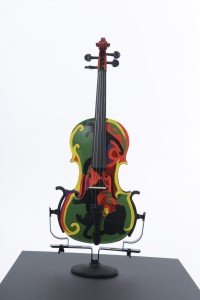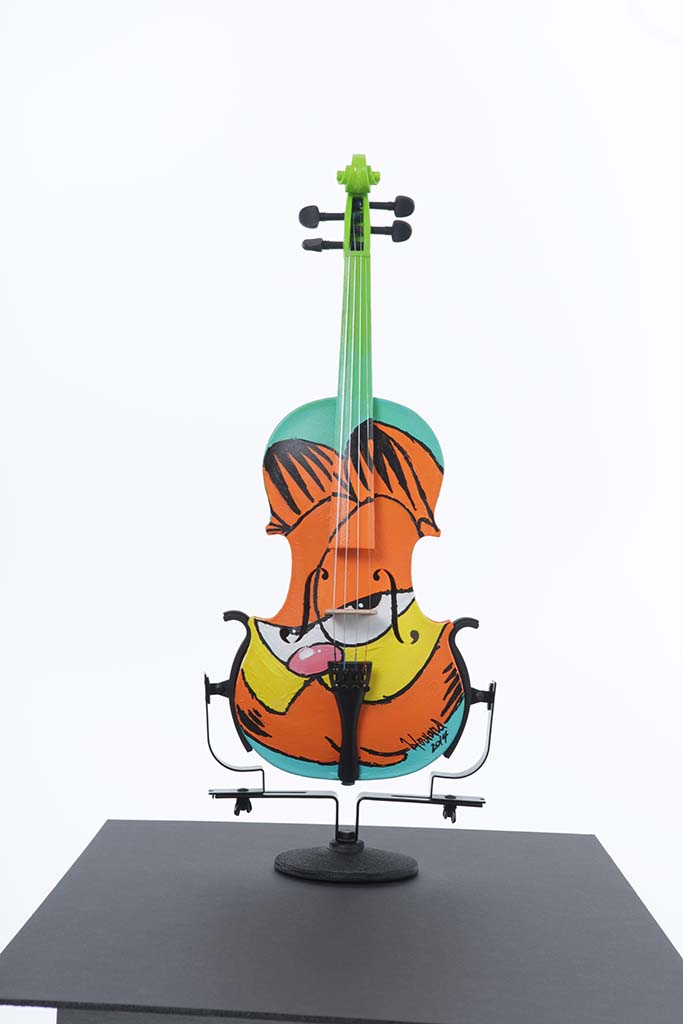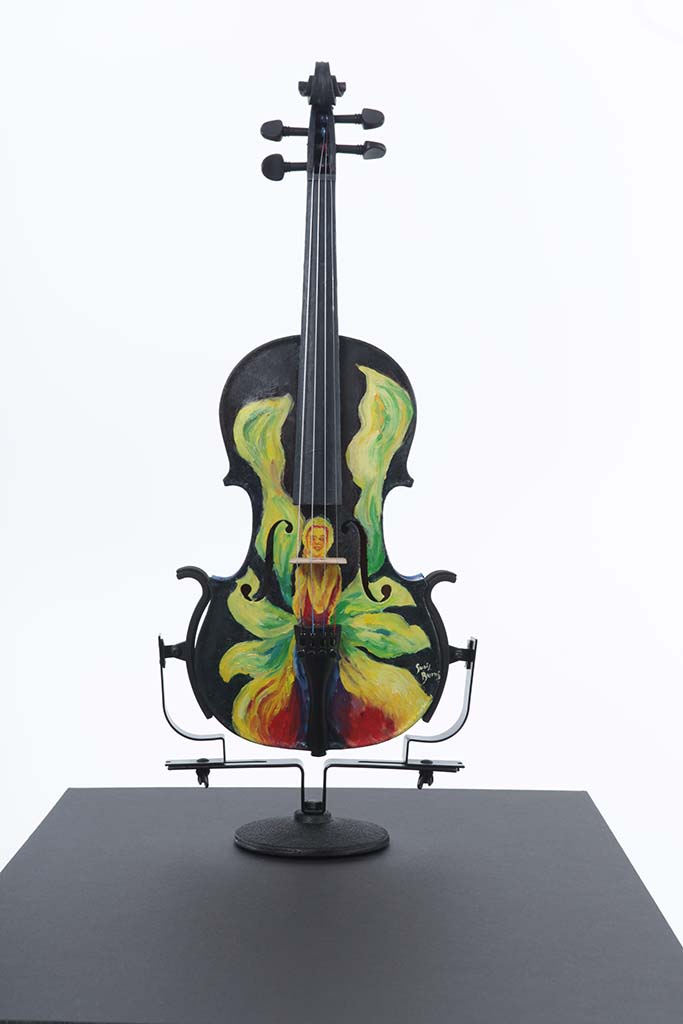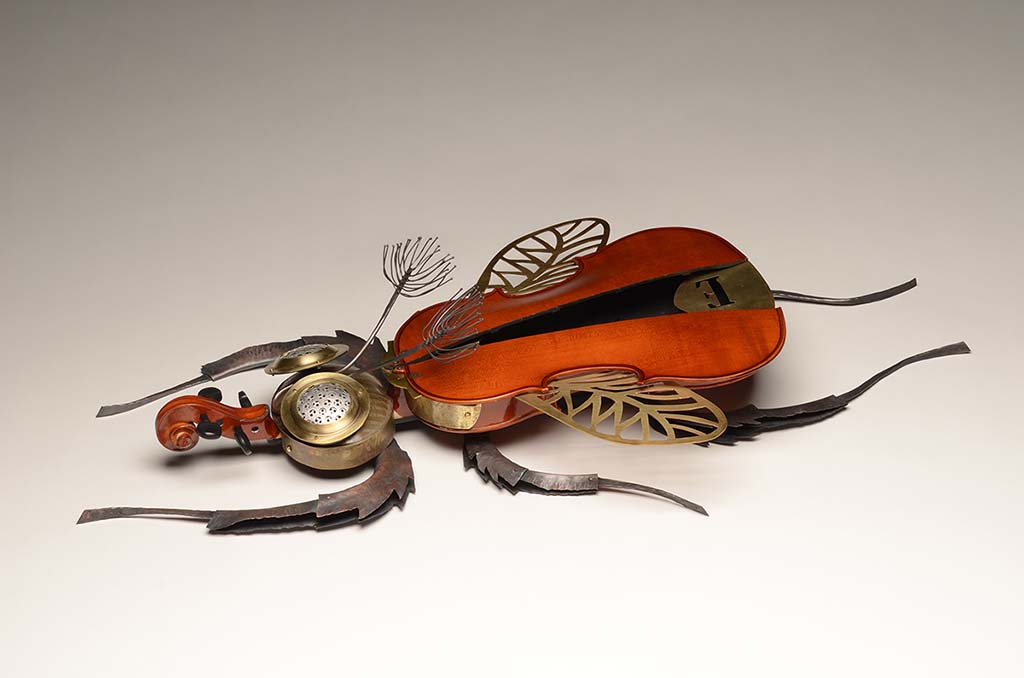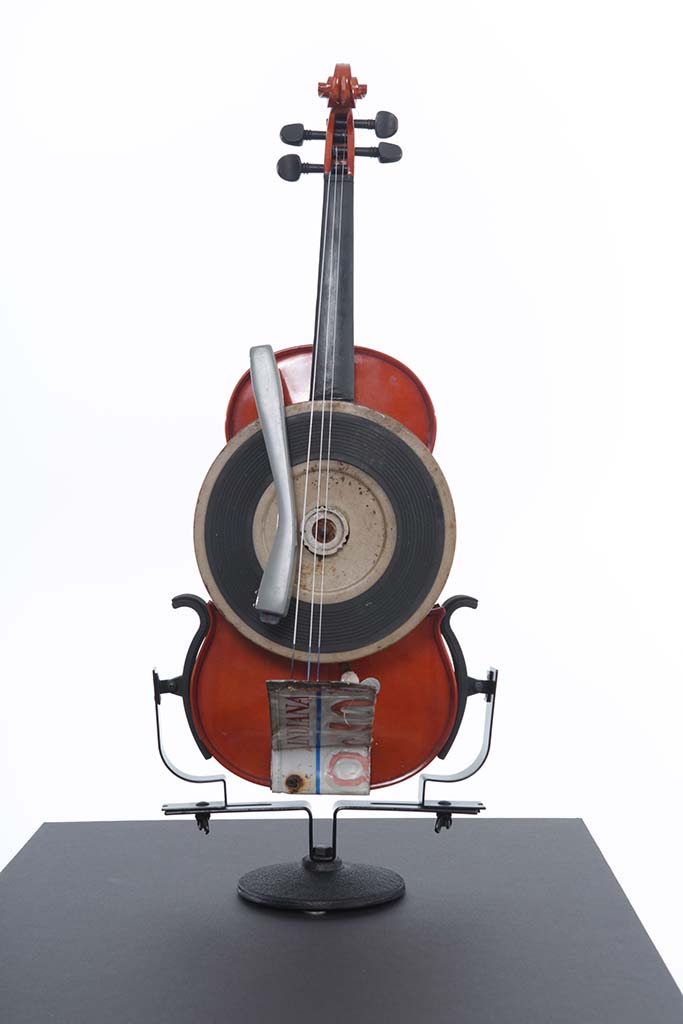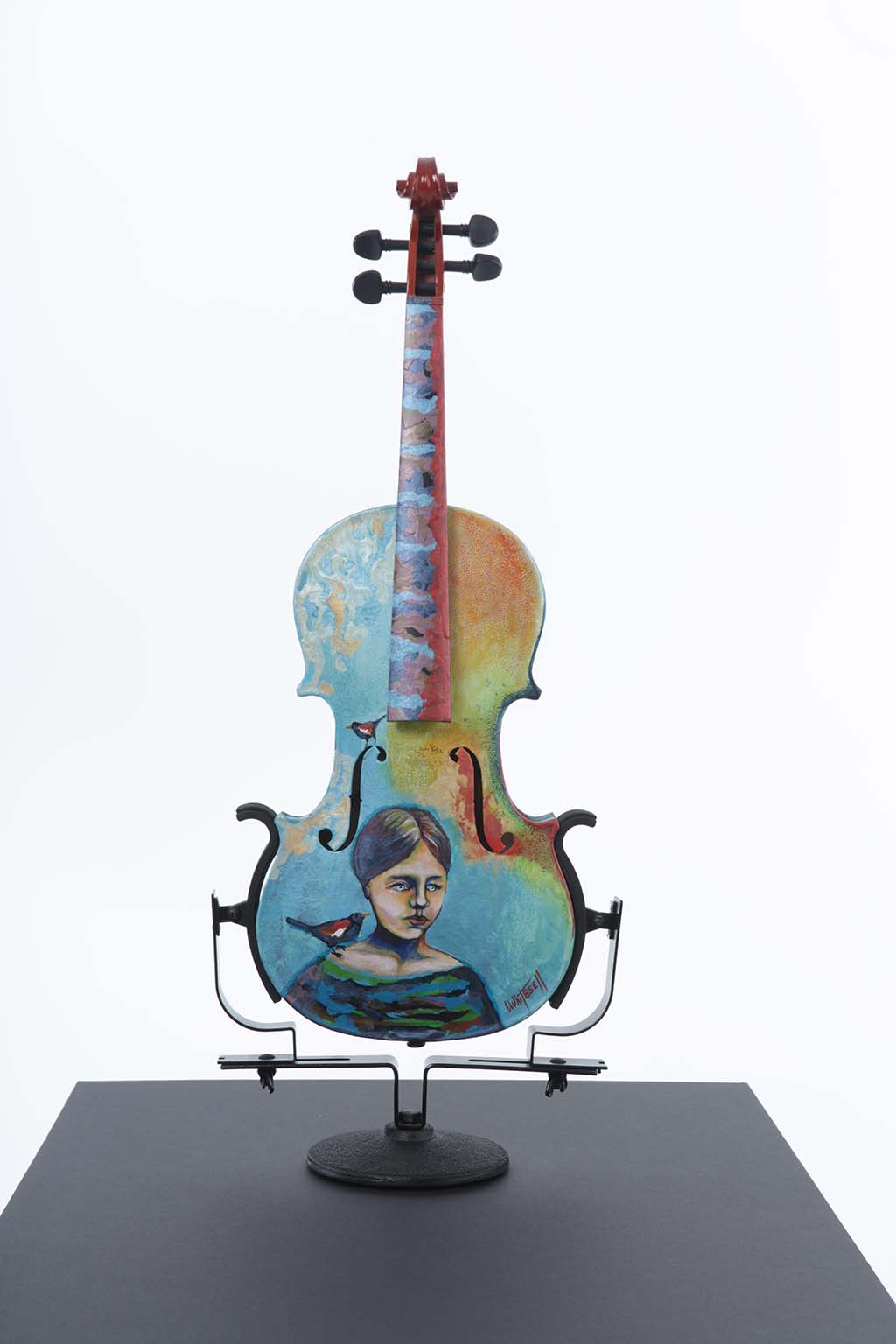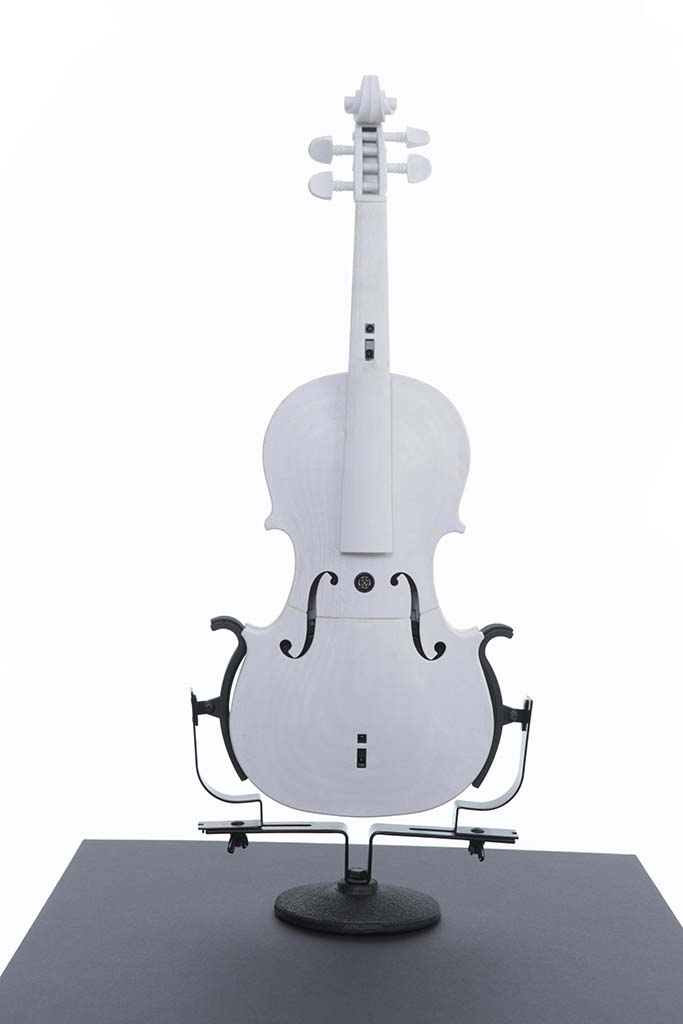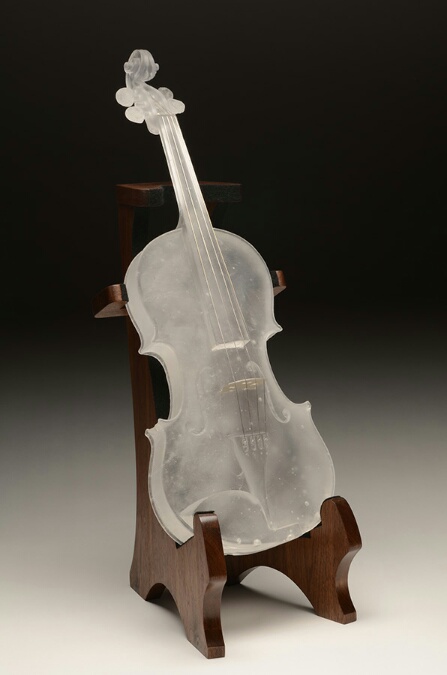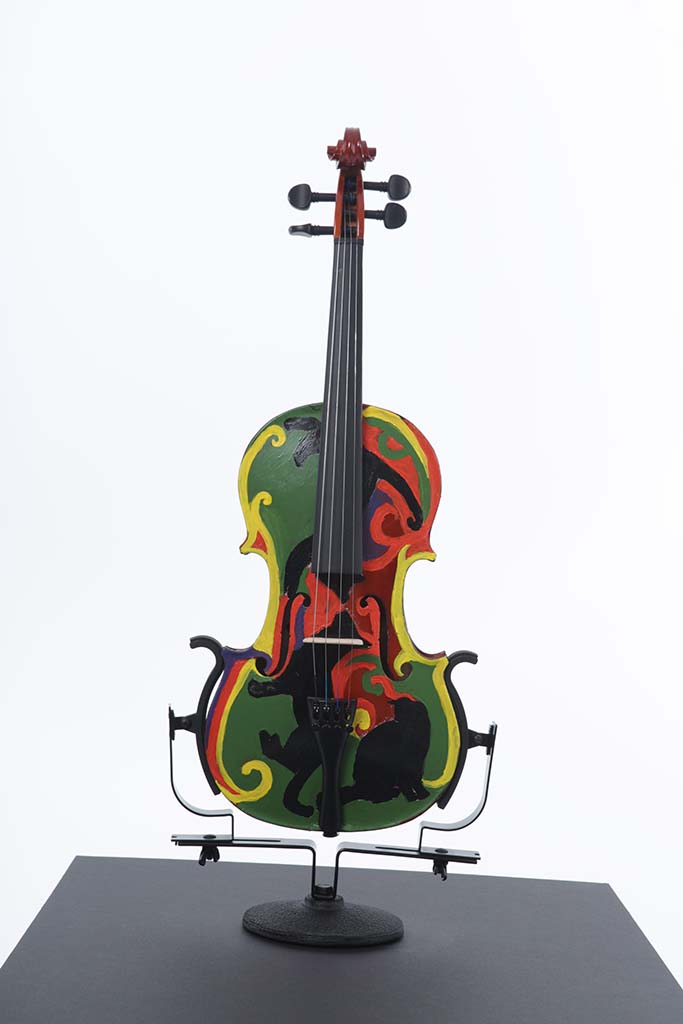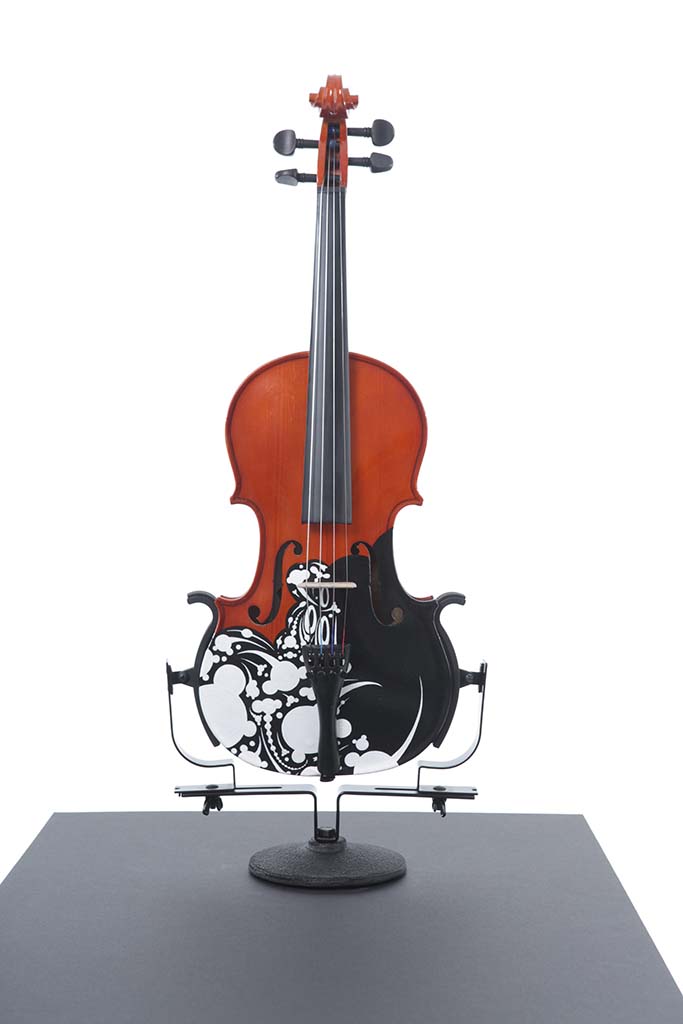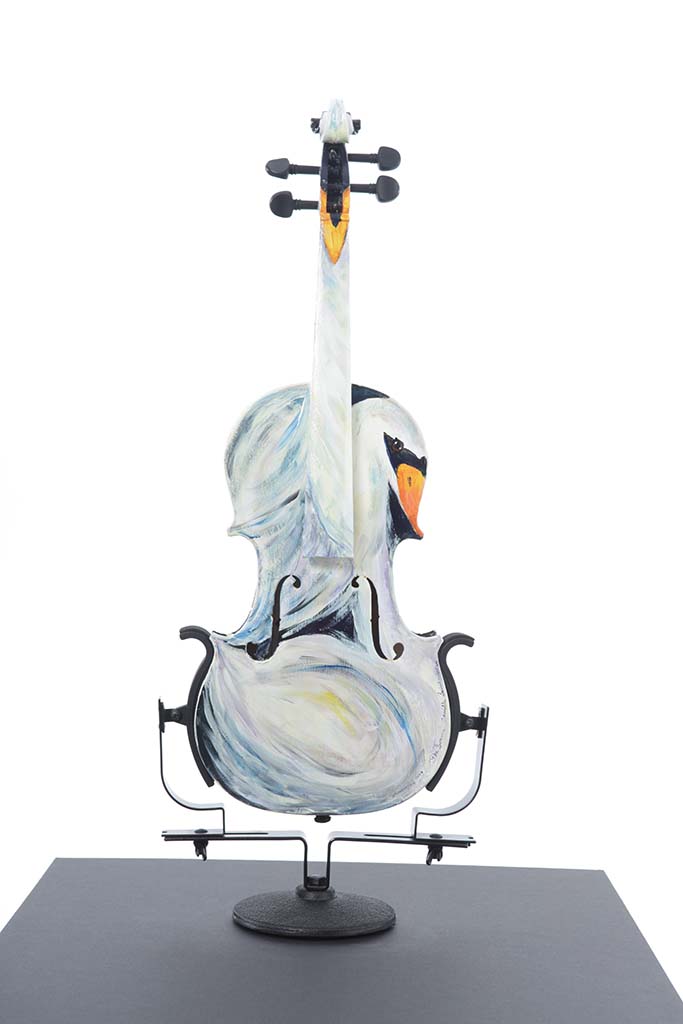IDIA Lab Staff Chris Harrison, Dan Eisinger, Blake Boucher, Trevor Danehy and Andy Hesick worked with Director John Fillwalk in designing and building a 3D scanned and laser printed violin – playable by gesture using custom, self-contained electronics. Bid here: https://qtego.net/qlink/emens.php
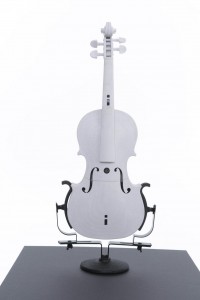 MUNCIE – For anybody who has ever dreamed of playing the violin, but found themselves stymied by one slight problem — namely, they don’t know how — John Fillwalk has just the fiddle for you.
MUNCIE – For anybody who has ever dreamed of playing the violin, but found themselves stymied by one slight problem — namely, they don’t know how — John Fillwalk has just the fiddle for you.
What’s more, he’ll be selling it Sept. 27.
In fact, Fillwalk’s will be one of 14 artistically rendered violins sold in a silent auction and dinner that night, ending a year-long observance of Emens Auditorium’s 50th anniversary.
“We’ve had some wonderful guest artists who’ve joined us for performances at Emens over the past year, helping us commemorate this milestone anniversary,” said Charles Sursa, who chaired the Emens 50th anniversary steering committee. “Now, with this dinner and auction, we look forward to bringing our celebration to a close with these exciting culminating events.”
Designs of the violins run from a metal bug to a Garfield-inspired piece to one made entirely of glass. The one made by Fillwalk, who is director of Ball State University’s Idea Lab, was rendered with lots of assistance from his colleagues at the Institute for Digital Intermedia Arts (IDIA) Lab, and seems a particular mind-blower.
“Basically, we wanted to apply our digital processes to the fund-raising event,” he said, noting how they first scanned a violin with a 3-D laser.
“You basically paint it with a laser light,” Fillwalk said, explaining how it was not unlike a grocery store’s laser scanner. The 3-D recreation was then made with resin via a 3-D printer and fitted with sophisticated electronic, um, gizmos, including three sensors. All of that was then mated with a recorded violin concerto performed by a violin major.
After that? Voila!
“We chopped it up into smaller samples,” Fillwalk said, adding that the violin’s three sensors allow the most musically-impaired of users to play the samples, plus control their pitch and volume.
Pretty unique, too, we observed.
“Yeah, it’s a little different,” Fillwalk conceded.
Stories behind other violins are no less interesting. Painting with oils, Ann Johnson put two entwined swans on hers, the neck of one trailing up the neck of the violin. It is the recreation of a sight she saw on the White River through a window of her home, then went to tell her longtime husband, Jack, who was ailing from cancer.
“I went over to his bed to tell him what I saw and he was gone,” she recalled, adding that music from “Swan Lake” was played at his funeral. “I never before had a particular attraction to swans, but I guess I do now.”
By the way, when an aging Bette Graham agreed to decorate a violin, she asked Johnson to touch it up if needed. When Graham died, Johnson examined the cat-decorated fiddle and barely touched it.
“That (violin) was the last thing Bette did,” Johnson said.
Other artists who contributed decorated violins to the auction include Susie Burns, Cassandra Copenhaver, Jennifer Halvorson, Nate Harmon, Tom Howard, Patricia Kreigh, Alfredo Marin, Jean McCauley, Pat Nelson and Aurora Robson. The university also commissioned Julie Borden, a nationally recognized instrument modifier, to paint a violin that has featured prominently in the promotion of the anniversary season.
Ball State will be auctioning off these artist rendition violins for Emens Auditorium’s 50th anniversary.
The auction is part of a university-sponsored fundraising effort to pay for future renovations. The violins will be set for public viewing in the main lobby of Minnetrista through Sept. 25.
Another unique one is BSU art professor Lynette Whitesell’s, a work she titled “Bariolage,” which is a special effect “obtained by playing in rapid alternation upon open and stopped strings.” A mixed-media specialist, she put a girl with a redwing blackbird on her shoulder — the bird standing for music — on the top and a girl wearing a blindfold on the back. The blindfold emphasizes the importance of hearing, Whitesell said.
“It’s a little ‘collage-y,'” the artist explained, describing what sounded like a complicated artistic process. What wasn’t complicated was her enthusiasm for both the project and Emens Auditorium.
Contributing to a place that has had such an impact on our community was also fulfilling. Recalling taking her little boy, Logan, to shows there, she noted that only the day before she had said goodbye to her now 18-year-old as he flew off to Marine Corps boot camp.
For many of us, she hinted, Emens is a place of magic memories.
Contact John Carlson at (765) 213-5824.
